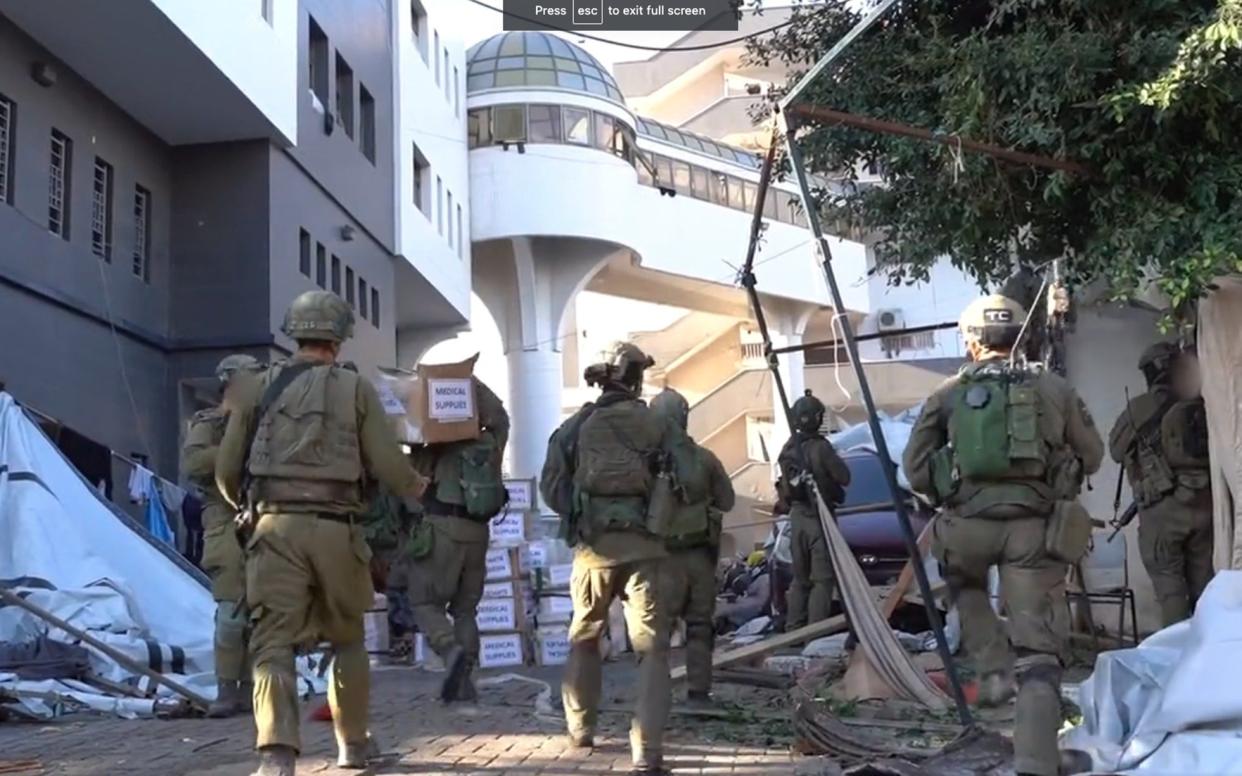Too many want to believe Hamas’s hospital lies

Hamas uses hospitals and other protected places like schools and mosques for terrorist purposes. Since 2006, when the terror group took over the Gaza Strip, we have seen report after report showing just that.
Back then, an American Public Broadcasting Service documentary showed Hamas gunmen prowling the corridors of Al-Shifa Hospital, intimidating staff and denying access to protected areas. In 2014, a Washington Post journalist reported that the hospital “has become a de facto headquarters for Hamas leaders”. In 2015, Amnesty International said that Hamas interrogated and tortured prisoners in Al-Shifa.
Yet since Israel launched its ground invasion of Gaza, this has suddenly come into question. IDF explanations for raids into civilian buildings, especially hospitals, have been treated with disbelief and even hostility. This is despite CCTV images of hostages being rushed around the Al-Shifa hospital, and evidence of a tunnel leading underground from within the complex. Captured Hamas terrorists have confirmed the use of hospitals for their terrorist cause and even Yahya Sinwar, the leader of Hamas in Gaza, admitted in a speech in 2021 that the group used civilian infrastructure for military purposes.
Chief among those questioning what ought to be clear facts, inevitably, has been the BBC and its international editor, Jeremy Bowen. After the IDF displayed weapons seized at Al-Shifa, he gave an on-air diatribe implying that this was not convincing evidence that Hamas had a base in the hospital. He even suggested the pile of weapons could belong to the “security department”. Perhaps it is a coincidence that Bowen’s claim directly echoed the words of a senior Hamas terrorist on Al Jazeera two days earlier.
US intelligence confirms Al-Shifa has been used as a military headquarters. But terminology used by the White House national security spokesman, John Kirby, that it housed a command “node” rather than a command centre as the Israelis described it, suggests a desire to underplay its significance. It’s hard to understand such pedantry when any military use of a hospital is illegal under the laws of war and renders an otherwise protected site a legitimate target for combat operations.
This has much broader implications for this war. Many people don’t want to believe the Israelis; it seems they would rather believe Hamas. Media outlets often caveat announcements by the IDF, pointedly saying that what they claim cannot be independently verified. Rarely, however, are reports from Gaza questioned in such a way, when every word coming from any part of the Strip that is still dominated by Hamas should be seen as being spoken under duress, whether by journalists, doctors or UN officials.
Very often casualty figures from the Gaza Health Ministry are treated as if they come from the NHS, even though it is well understood that the ministry is ruthlessly controlled by Hamas.
Those who are pressing for a ceasefire weaponise Hamas’s casualty statistics. They ignore the reality that Hamas habitually has not only inflated these figures but also made no distinction between deaths of uninvolved civilians and terrorist fighters. Nor, of course, do they separate out casualties caused by their own rockets, of which a significant proportion have fallen short into Gaza since the war began. The IDF has been exclusively targeting terrorists, and although civilian casualties are tragically inevitable given Hamas’s use of human shields, there is no doubt that a high proportion of the reported deaths have been fighters.
The cynical agenda that lies behind blind acceptance of Hamas’s casualty figures accounts for the growing narrative that, despite years of evidence, Hamas miraculously no longer uses hospitals as military facilities and Israel is attacking such places without justification. Quite why the IDF would risk its own soldiers’ lives for no military purpose, as well as suffering the inevitable international opprobrium associated with operations in and around hospitals, is never explained.
Many who distort these realities to call for a ceasefire may be well meaning, but in practice they are saying Israel should stop defending its population and Hamas should live to fight another day. That is extremely dangerous.
Both the British and American governments have given the strongest support to Israel since the atrocities of October 7, and have rejected these demands for a ceasefire. But they ought to be going further, helping to educate the public and counteract Hamas’s disinformation.
There are lessons here from our approach to the war in Ukraine, for example with the MoD’s daily briefings, which both puts the war into its real context and dispels Russian propaganda. Instead, when threatened with terrorists, our political leaders seem happier to take the terrorists’ side in the media war, playing into Hamas’s hands by virtue-signalling implications that Israel is not adhering to the laws of war and is inflicting unnecessary civilian casualties when they know that this is not true.

 Yahoo News
Yahoo News 
